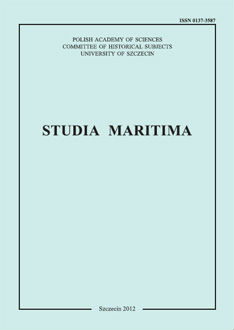Kołobrzeg nad Bałtykiem. Obraz miasta nadmorskiego na Ziemiach Odzyskanych po zakończeniu drugiej wojny światowej
Kołobrzeg on the Baltic Sea. The city’s image in the first months after World War II
Author(s): Jakub SuchýSubject(s): History
Published by: Wydawnictwo Naukowe Uniwersytetu Szczecińskiego
Keywords: West Pomerania 1945; colonization in the pioneer’s period; Kolberg 1945; local communities
Summary/Abstract: The Baltic Sea has always played a vital part in the history of Poland. In the light of the resolutions of the Yalta Conference, Poland’s boarders were shifted, including Western Pomerania in its territory. In 1945 Kołobrzeg was the most severely destroyed city on that territory. The city was either already ablaze or set on fire by German gangs active at that time. All its pre-war functions were non-existent. The harbour was immobilized, the economic basis fell apart. The city was devoided of water, power and food delivery was problematic. The newly-arrived Polish settlers perceived Kołobrzeg as a tragic and overwhelming image of a “dead city”. The area was dominated by debris, the stench of decomposing bodies of German soldiers and looters arriving from central Poland. The Wehrwolf pursued sabotages and the most terrifying Red Army committed crime and rapes. In the light of the population records and files of the Registry Office the inflow of people was rather slow during the first months, only to increase the pace in the following years. Many of them believed they would find employment rebuilding the city or in the harbour. The settlers had long been insecure about the temporary character of Poland in Western Pomerania and on the Baltic coast.
Journal: Studia Maritima
- Issue Year: 27/2014
- Issue No: 2
- Page Range: 385-411
- Page Count: 27
- Language: Polish

